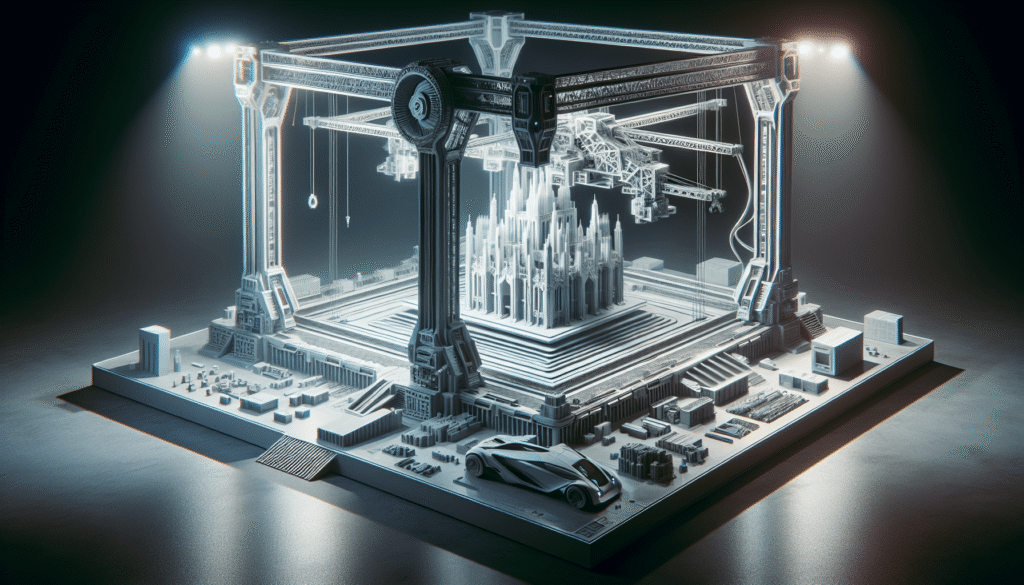Have you ever wondered how the landscape of manufacturing is changing with the rise of cloud technology? It’s a fascinating shift that seems to be reshaping the way we think about producing goods. One of the most intriguing developments in this arena is the growth of Print-as-a-Service (PaaS) driven by cloud manufacturing. This trend is not just a minor adjustment to existing models, but rather a substantial shift that is challenging traditional manufacturing processes. Let’s explore how cloud manufacturing is disrupting traditional models and the growth of Print-as-a-Service, redefining what we thought we knew about production.

The Evolution of Manufacturing: From Traditional to Cloud
As someone who has spent a fair amount of time marveling at the complexities of manufacturing, seeing the transition from traditional methods to cloud-enabled approaches is nothing short of awe-inspiring. Traditional manufacturing typically involved centralized production facilities, significant capital investment, and lengthy production timelines. However, the introduction of cloud technology is flipping this script on its head.
Traditional Manufacturing Models
Let’s reminisce about the traditional manufacturing methods, which were akin to a tightly choreographed dance. You had your grand factories, mammoth machines, and a workforce that operated like the gears of a well-oiled clock. It worked, but it required considerable investment and infrastructure.
Key Characteristics of Traditional Manufacturing:
- Centralized facilities
- High upfront costs and investment
- Long production lead times
- Limited flexibility in customization
The Advent of Cloud Manufacturing
Enter the cloud – a mysterious, invisible entity promising seemingly endless possibilities. Cloud manufacturing takes the principles of cloud computing and applies them to manufacturing processes, offering a flexible, decentralized alternative to traditional methods.
Cloud manufacturing capitalizes on the following:
- Decentralization of production
- Reduced capital investment in infrastructure
- Faster production times
- Increased flexibility and customization options
Understanding Print-as-a-Service
You might be asking, “What exactly is Print-as-a-Service?” Picture it like this: PaaS allows companies to leverage the capabilities of advanced printing technologies without the need to own or maintain the machinery themselves. Instead, they access these services through a cloud-based platform. It’s a bit like a Netflix subscription, but for printing.
Key Components of Print-as-a-Service
Here’s the crux of what PaaS entails. Imagine you need a specialty product printed — you can utilize a PaaS provider to manage the end-to-end printing process. This model includes the following components:
- Cloud-Based Access: Companies can tap into sophisticated printing technologies via the cloud.
- On-Demand Service: Flexibility to print products as needed without maintaining infrastructure.
- Scalability: Easily scale operations up or down based on demand without significant cost implications.
- Cost Efficiency: Pay-per-use pricing models reduce the burden of heavy upfront investments.

The Impact of Cloud Manufacturing on Traditional Models
Now, let’s discuss how cloud manufacturing and PaaS are causing a ripple effect, dismantling the stronghold of traditional models. The influence of this new paradigm is as subtle as a sledgehammer, but much more precise in operation.
Disruption of Supply Chains
Cloud manufacturing is shaking up supply chains by introducing agility and responsiveness. It eliminates the need for large inventories and allows companies to adopt a just-in-time production approach. This means reduced storage costs, minimized waste, and a more responsive production system.
Comparison of Supply Chain Models
| Aspect | Traditional Model | Cloud Manufacturing |
|---|---|---|
| Inventory | High levels due to mass production | Minimal, just-in-time |
| Flexibility | Low, fixed production runs | High, customizable production |
| Production Time | Long lead times | Short, on-demand |
| Cost Efficiency | Higher due to inventory and equipment | Lower due to pay-per-use model |
Such radical changes aid companies in being leaner and more adaptable, allowing them to pivot quickly when market demands shift.
Enabling Customization and Personalization
Customers today are seeking products that reflect their unique preferences, and cloud manufacturing makes personalized goods a reality without skyrocketing costs. With flexible tools and on-demand production, customization becomes both affordable and feasible.
Benefits of Customization with Cloud Manufacturing:
- Greater customer engagement and satisfaction
- Increased brand loyalty
- Differentiation from competitors offering standardized products
Challenges Faced by Traditional Manufacturers
Despite the optimism surrounding cloud manufacturing, there are apprehensions, especially for traditional manufacturers who may find themselves in an uncomfortable position of having to adapt or die.
Resistance to Change
Embracing new technologies requires a shift in mindset, and this is often where the challenge lies. Skepticism can reign supreme among those accustomed to tried-and-true methods. Convincing stakeholders to abandon established practices in favor of cloud-enabled methods can be a hurdle.
Integration with Existing Systems
Integrating cloud solutions with legacy systems is like trying to fit a square peg into a round hole. It’s complicated. Traditional systems may not speak the same ‘language’ as cloud platforms, leading to compatibility issues and requiring expert intervention.
Why Cloud Manufacturing is Gaining Traction
Despite challenges, cloud manufacturing is garnering more attention and adoption. It’s easy to see why when considering its numerous benefits—though life is never as uncomplicated as one might hope, and these benefits are enticing enough to warrant serious consideration.
Cost Reduction and Efficiency
At its core, cloud manufacturing offers cost benefits that are hard to ignore. By eliminating the need for physical infrastructure, companies can funnel resources elsewhere, such as research and development or customer engagement initiatives.
Environmental Sustainability
Let’s not overlook the potential environmental benefits that come with the cloud. Reduced waste, energy efficiency, and smarter resource allocation contribute to a greener manufacturing process, aligning with a growing emphasis on sustainability.
The Future of Print-as-a-Service and Cloud Manufacturing
With any burgeoning technology, it’s crucial to gaze into the crystal ball and envision what lies ahead. Cloud manufacturing and PaaS aren’t merely transient trends; they’re reshaping the manufacturing landscape.
Innovations on the Horizon
Looking forward, we can anticipate several technological advancements that will continue to drive cloud manufacturing forward. These include improved AI-driven design processes, more sophisticated additive manufacturing techniques, and expanded IoT integration.
Challenges to Anticipate
While the prospects are promising, potential pitfalls remain—such as cybersecurity threats, intellectual property concerns, and the need for robust digital infrastructure in all parts of the world.
Conclusion
So, is cloud manufacturing merely a disruptor or the future of production? It’s a bit of both, in my experience. By redefining production models and encouraging a more agile, efficient manufacturing landscape, it challenges conventional wisdom and invites companies to rethink their strategies. As Print-as-a-Service continues to grow, it promises to lead us into a brave new world of manufacturing that’s faster, greener, and decidedly more flexible than ever before.
Through this transformation, we find ourselves on the edge of an exciting frontier that not only disrupts traditional models but sheds light on a sustainable, innovative approach to production. As we move forward, embracing these changes could very well be key to thriving in the manufacturing domain.


